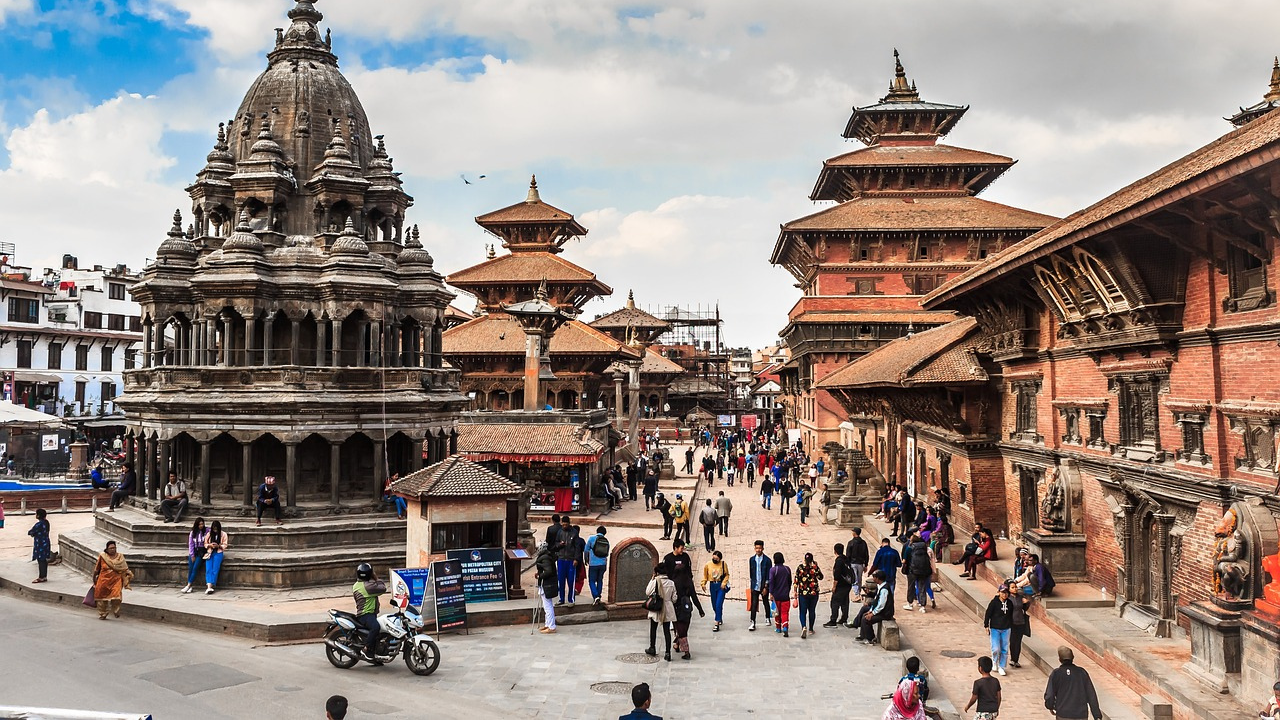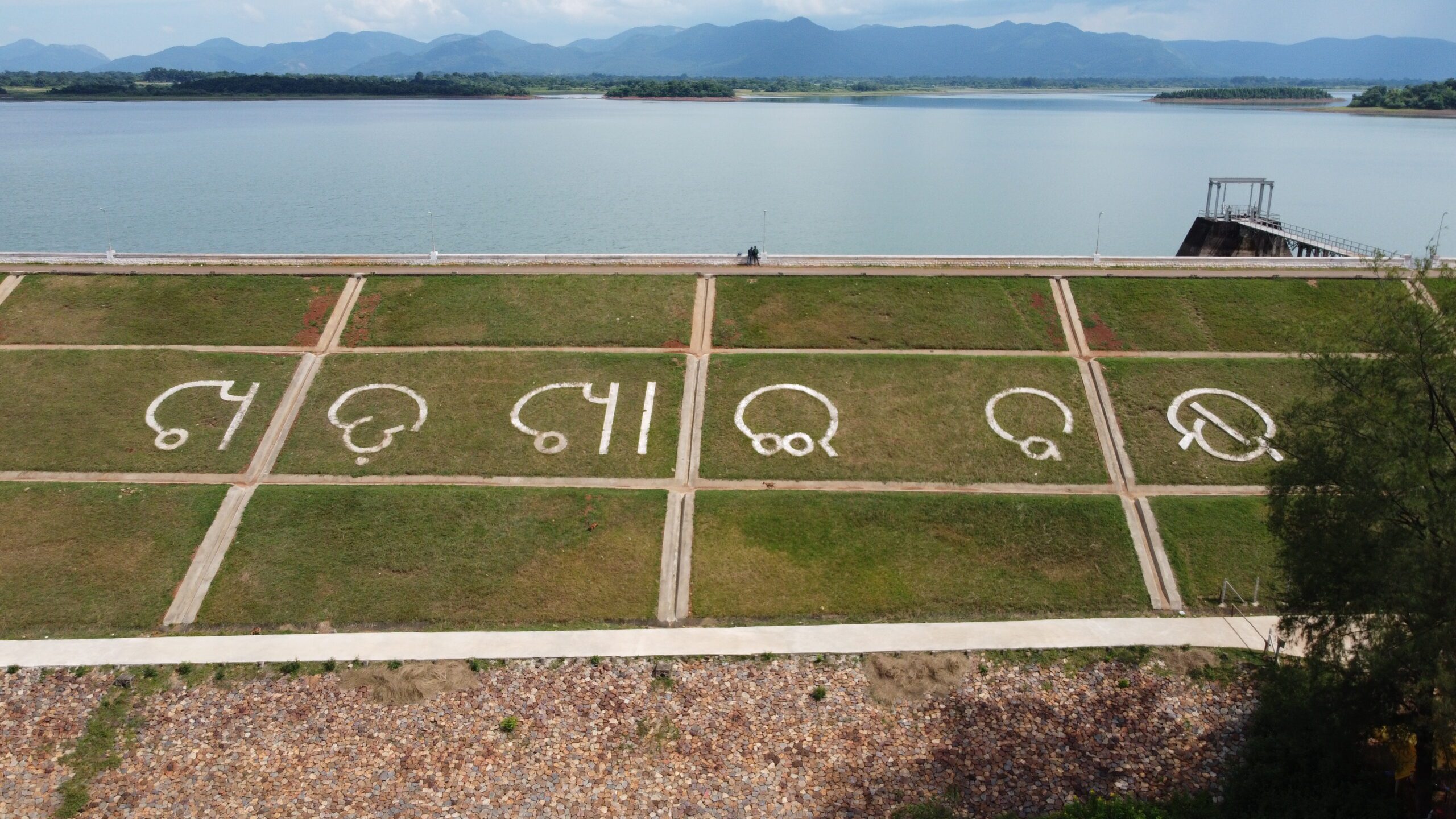50 Man-Made Wonders Of The World 2025
50 Man-Made Wonders Of The World 2025: The earliest lists of the Seven Wonders of the Ancient World were compiled more than 2,000 years ago by ancient Hellenic tourists. Except for the Great Pyramid of Giza, none of those wonders exist today—they were destroyed by earthquakes, fires, and, in one case, by an angry mob. Since then, many other lists have been created to showcase humanity’s most astonishing architectural and engineering feats. Here’s our selection of the greatest man-made wonders of the world.
50. Registan Square
Arguably the most awe-inspiring site in Central Asia, Registan Square is an iconic landmark in Samarkand, Uzbekistan. Flanked by three grand madrasas—each adorned with stunning mosaics, intricate tilework, and majestic domes—Registan is a breathtaking display of Islamic architecture. These madrasas are among the oldest preserved in the world, as anything older was destroyed by Genghis Khan.
The name Registan translates to “Sandy Place” in Tajik, and in medieval times, it served as the commercial and cultural center of Samarkand. Over the centuries, the madrasas have endured multiple earthquakes, yet they still stand as a testament to the incredible craftsmanship of their builders.
49. Sagrada Família
Officially known as the Basílica de la Sagrada Família, this famously intricate church in Barcelona is the masterpiece of renowned Catalan architect Antoni Gaudí. Construction began in 1882, and incredibly, 137 years later, it remains unfinished. However, it is expected to be completed by 2026.
Blending Art Nouveau and Gothic styles, the fantastical basilica features eight completed spires, with ten more yet to be built. Its twisting turrets, surreal curves, and intriguing gargoyles create an otherworldly appearance that continues to captivate millions of visitors annually.
48. Potala Palace
Perched atop a hill in the heart of the Lhasa Valley, Potala Palace is one of Tibet’s most iconic landmarks. Originally built in the 7th century and later reconstructed in 1649, it served as the winter residence of the Dalai Lamas.
This colossal structure houses over 10,000 shrines and more than 200,000 statues within its sacred halls and ceremonial chambers. Surrounded by towering mountains, Potala Palace remains a powerful symbol of Tibetan heritage and an awe-inspiring sight for all who visit.
47. Hoover Dam
A marvel of modern engineering, the colossal Hoover Dam spans the Black Canyon of the Colorado River, holding back an astonishing 17 trillion gallons of water behind its massive concrete walls. Built during the Great Depression in the 1930s, this towering structure rises 726 feet high.
Today, Hoover Dam is recognized as a National Historic Landmark, offering exhibits and guided tours that showcase its incredible architecture and impact. Beyond providing hydroelectric power and water to millions, the dam played a crucial role in the development of Las Vegas and the entire southwestern United States.
46. Meteora
Meaning “elevated” in Greek, Meteora is a stunning rock formation in northern Greece, where massive boulders dominate the skyline. What makes this landscape even more breathtaking are the ancient monasteries that seem to defy gravity, perched precariously on the cliffs.
Dating back to the 15th century, these monasteries were built as places of refuge from invasions and are still active religious sites today. The Holy Trinity Monastery set 400 meters atop a natural rock tower, is the most famous and offers awe-inspiring views of the region.
45. Hiroshima Peace Memorial
One of the world’s most poignant symbols of peace, the Hiroshima Peace Memorial stands as a stark reminder of the devastation caused by the atomic bomb attack of 1945. The memorial includes the Genbaku Dome, one of the few structures that survived the explosion, and the surrounding Peace Park, which features numerous monuments dedicated to promoting peace and remembrance.
This historic site serves as a solemn yet powerful tribute to the resilience of Hiroshima and its people.
44. Dubrovnik Old Town
One of the most beautiful towns in Europe, Dubrovnik’s Old Town is a red-roofed wonder waiting to be explored. Enclosed by 16th-century stone walls, its cobblestone streets are lined with restaurants, bars, boutiques, and museums.
The Pile Gate, built in 1573, marks the entrance to this medieval city, with its remarkable Renaissance-style arches. The Old Town is especially enchanting at night when its historic buildings are illuminated, offering a magical experience. For a breathtaking view, take the Dubrovnik Cable Car to witness the city’s stunning architecture from above.
43. Tikal
Hidden deep in the lush Guatemalan jungle, the ancient ruins of Tikal are a sight to behold. Once the largest and most powerful Mayan city (around 600 AD), Tikal features towering pyramids, palaces, and temples scattered across the dense rainforest.
A must-see is the Temple of the Two-Headed Serpent, one of the tallest pre-Columbian structures in the Western Hemisphere. Climbing to its summit rewards visitors with breathtaking 360° views of the jungle canopy stretching as far as the eye can see.
42. CN Tower
Located in downtown Toronto, the CN Tower is Canada’s most iconic landmark. Built between 1973 and 1976 by Canadian National Railways, it held the title of the world’s tallest structure for over 30 years before being surpassed by the Burj Khalifa in Dubai.
Standing at 1,815 feet, the tower offers an exhilarating experience, with glass elevators taking visitors up to observation decks. On a clear night, you can even see the distant lights of Rochester, New York, across Lake Ontario.
41. Brandenburg Gate
Built-in the late 1700s, Brandenburg Gate is Berlin’s most famous landmark. As the only surviving city gate, it marks the entrance to Unter den Linden, the city’s historic boulevard.
During the Cold War, the gate became a site of protest and a symbol of Germany’s division. When the Berlin Wall fell in 1989, Brandenburg Gate became an emblem of reunification. Today, it stands fully restored, representing freedom, unity, and European history.
40. Sheikh Zayed Grand Mosque
A masterpiece of modern Islamic architecture, the Sheikh Zayed Grand Mosque in Abu Dhabi is a breathtaking fusion of elegance and spirituality. Built using 90,000 tons of pure white marble from North Macedonia, it features over 80 domes, 1,000 columns, and four towering minarets.
The mosque is open to visitors of all faiths and serves as a symbol of peace, tolerance, and cultural diversity. Its dazzling chandeliers, reflecting pools, and intricate calligraphy make it one of the most stunning religious structures in the world.
39. Forbidden City
Dominating the heart of Beijing, the Forbidden City has been a symbol of China’s imperial history since its construction in 1406. For nearly 500 years, it served as the residence of Chinese emperors from the Ming and Qing Dynasties.
This vast complex, surrounded by a high wall and a wide moat, contains 980 buildings, showcasing the grandeur of Chinese architecture. Highlights include the Hall of Supreme Harmony and the Palace of Heavenly Purity, both must-visit sites for history and architecture enthusiasts. Since the last emperor’s abdication in 1925, the Forbidden City has become one of China’s most treasured cultural landmarks.
38. Christ the Redeemer
Perched atop Corcovado Mountain in Rio de Janeiro, Christ the Redeemer stands with arms outstretched, overlooking the vibrant city below.
Construction of this Art Deco masterpiece began in 1922, and at 98 feet tall, it remains one of the largest statues of its kind. The journey to the summit is an experience in itself—most visitors take a cogwheel train, once requiring hundreds of steps to reach the top. Today, elevators and escalators make the ascent more accessible.
From the peak, visitors are rewarded with breathtaking panoramic views of Rio, its beaches, and the lush landscapes beyond.
37: Petronas Twin Towers
The Petronas Twin Towers in Kuala Lumpur were once the world’s tallest buildings before being surpassed in 2004 by Taipei 101. However, the towers remain the tallest twin buildings in the world.
These 88-floor towers are constructed primarily of reinforced concrete, featuring a steel and glass facade designed to incorporate Islamic motifs, reflecting Malaysia’s Muslim heritage.
The observation deck, located on the 86th floor, offers breathtaking views above the clouds. For an extra thrill, visitors can walk across the double-decked Skybridge, which connects the two towers at levels 41 and 42.
36: Pont du Gard: A Magnificent Engineering Achievement
Pont du Gard is the most impressive section of a 50-km-long aqueduct built in ancient Rome to carry water to the northeast of present-day France. Spanning the width of the Gardon River, it is the highest of all Roman-era aqueduct bridges, with its three tiers of arches towering 50 meters high.
Despite being constructed in the 1st century AD, it remains remarkably well-preserved, as local lords used it as a toll bridge for centuries. Set in a scenic location, the Pont du Gard offers stunning photo opportunities and is now a popular tourist attraction and an important historical monument.
35: Sigiriya: The Lion Rock of Sri Lanka
Aspiring archaeologists must add Sigiriya to their list of must-see places in Sri Lanka. This ancient city is built on a steep slope, topped by a plateau almost 600 feet high, known as Lion’s Rock. Overlooking the lush jungles below, this breathtaking rock fortress dates back to the 3rd century BC when it was a monastery, later transformed into a royal residence.
Visitors access the site through staircases and rooms emerging from the lion’s mouth. The site also features ponds, gardens, and fountains. Locals proudly consider Sigiriya the Eighth Wonder of the World due to its historical and architectural significance.
34: Mount Rushmore: A Monument to American History
One of the most unique tourist attractions in the United States, the majestic Mount Rushmore is visited by millions each year. Carved between 1927 and 1941 into the side of the mighty mountain, the colossal sculptures depict four of the nation’s most revered presidents: George Washington, Thomas Jefferson, Theodore Roosevelt, and Abraham Lincoln.
Each figure represents a defining era in American history—birth, growth, development, and preservation. Visitors to the Mount Rushmore National Memorial can not only gaze in awe at the 18-meter-high sculptures but also explore exhibits at the visitor center, detailing the monument’s construction and significance.
33: Tower Bridge: A Victorian Engineering Marvel
Often mistaken for London Bridge, Tower Bridge is a late-Victorian masterpiece showcasing Britain’s engineering prowess. Opened in 1894, it spans the River Thames near the historic Tower of London, another iconic landmark.
Tower Bridge is a bascule (drawbridge) powered by engine rooms housed in the Neo-Gothic North and South Towers—a remarkable feat of 19th-century engineering. Still in operation today, the bridge has been modernized with stunning evening lights, making it a must-visit attraction for travelers.
32: The Pyramids of Meroë: Sudan’s Forgotten Treasures
In the third and final capital of the Kushite Kingdom, located in modern-day Sudan, stand over 200 ancient pyramids, many of which remain intact, rising from the vast, barren desert. The Kushite Kingdom, a dominant force in Nubian history, thrived for over 3,000 years, leaving behind these breathtaking pyramids.
The walls of these pyramids are adorned with inscriptions that offer a glimpse into this once-powerful civilization. However, the Kushite script remains undeciphered, with most of our knowledge of their history coming from ancient Roman scrolls. These pyramids are a hidden gem for history enthusiasts and travelers seeking off-the-beaten-path wonders.
31: Santa Maria del Fiore: Florence’s Architectural Jewel
One of the world’s most renowned cathedrals, Santa Maria del Fiore, has captivated visitors since its completion in 1436. Built using green, pink, and white marble, its exquisite Gothic Revival façade features intricate carvings, statues, and three stunning rose windows. The entrance boasts three solid bronze doors, each adorned with intricate detailing.
Atop the cathedral sits its colossal red-tiled dome, a defining landmark visible across Florence. While the interior is relatively austere compared to its lavish exterior, visitors can admire remarkable artworks and tombs, making it an unmissable stop in Italy.
30: The Terracotta Army: China’s Silent Guardians
Discovered by accident in the 1970s, the Terracotta Army is one of the most extraordinary archaeological finds in history. Located in Xi’an, China, this collection consists of thousands of life-sized clay soldiers and horses buried in underground pits dating back to the 3rd century BC.
What makes these warriors even more remarkable is that each face is unique, individually hand-carved over 40 years of meticulous craftsmanship. Visitors can explore three excavated pits within the Museum of the Terracotta Army, offering a glimpse into the grandeur of China’s first emperor, Qin Shi Huang’s tomb.
29. Wieliczka Salt Mine, Poland
Located on the outskirts of Kraków, Poland, the Wieliczka Salt Mine is a breathtaking underground marvel. Established in the 13th century, it remained one of the longest-operating salt mines in the world until its closure in 2007.
The site features an underground city, intricately carved from rock salt, with vast chambers, winding tunnels, and even a chapel renowned for having some of the best acoustics in Europe. Dozens of ancient salt sculptures stand as a testament to the mine’s rich history, now complemented by striking modern artworks from contemporary artists. A UNESCO World Heritage Site, Wieliczka Salt Mine remains one of Poland’s most unique and fascinating attractions.
28. Lalibela Churches, Ethiopia
Built by King Lalibela to serve as the New Jerusalem, the city of Lalibela in the Ethiopian Highlands is home to 11 awe-inspiring monolithic churches. These remarkable structures were carved from the top down into solid rock between the 7th and 13th centuries, connected by a labyrinth of tunnels and passageways.
Among them, the Church of St. George stands out as the most impressive. Shaped like a Greek cross, this architectural masterpiece rises 40 feet high, meticulously hewn into the mountainside. Inside, visitors can marvel at intricate artworks and the mystical atmosphere that makes this UNESCO-listed site one of the most extraordinary religious monuments in the world.
27. Gardens by the Bay, Singapore
Singapore’s 21st-century botanical wonder, Gardens by the Bay, is a 101-hectare futuristic paradise filled with space-age biodomes, towering supertrees, and whimsical sculptures. Built on reclaimed land in central Singapore, this award-winning attraction has quickly become an iconic landmark.
Its Supertree Grove features tree-like structures reaching 160 feet high, which light up the night with dazzling displays. The Flower Dome, the world’s largest glass greenhouse, showcases an astonishing variety of flora from different climates, while the Cloud Forest immerses visitors in a misty, tropical mountain environment, complete with a breathtaking 115-foot indoor waterfall.
26. Taj Mahal, India
Standing as an eternal symbol of love, the Taj Mahal in northern India is a magnificent white marble mausoleum built by Mughal Emperor Shah Jahan in memory of his beloved wife, Mumtaz Mahal.
Often described as a “teardrop on the cheek of eternity,” this UNESCO World Heritage Site is one of the most well-preserved and celebrated monuments in the world. The ornate domed structure is part of a vast architectural complex, featuring reflecting pools, beautiful gardens, and exquisite floral carvings—all contributing to its status as a masterpiece of Mughal architecture.
25. Teotihuacán, Mexico
Just outside Mexico City, the ancient metropolis of Teotihuacán stands as a powerful reminder of a 2,000-year-old civilization. Once the largest city in the world during the first century AD, Teotihuacán predates the Aztecs, who later revered it as the “birthplace of the gods.”
Its massive pyramids, including the Pyramid of the Sun and the Pyramid of the Moon, still dominate the landscape. Although only ruins remain, the site continues to tell the story of an advanced culture that built grand temples, intricate murals, and a complex urban layout, which still fascinates archaeologists today.
24. Sydney Opera House, Australia
Recognized as a 20th-century architectural masterpiece, the Sydney Opera House is one of the most iconic landmarks in Australia. Designed by architect Jørn Utzon to resemble a series of sails, this world-famous performing arts center sits on the edge of the stunning Sydney Harbour, surrounded by the Royal Botanic Gardens.
Hosting over 1,500 performances annually, the Opera House is a hub for music, theatre, and dance. Whether attending a show or simply admiring its distinctive silhouette, this UNESCO-listed site remains an unmissable attraction for visitors from around the world.
23. Tiger’s Nest Monastery, Bhutan
Perched dramatically on a cliffside, 900 meters above the Paro Valley, Bhutan’s Tiger’s Nest Monastery is one of the country’s most sacred and awe-inspiring sites. Built in 1692, the monastery is said to be the place where Guru Rinpoche, a key figure in Tibetan Buddhism, meditated.
Reaching the monastery is no easy feat—visitors must ascend steep stone steps, navigate cliffside trails, and cross rickety wooden bridges to arrive at this breathtaking sanctuary. From the top, sweeping panoramic views of the lush valley and forest below make the trek well worth the effort.
22. Mezquita of Córdoba, Spain
A stunning example of Moorish architecture, the Mezquita of Córdoba is a mesmerizing structure with a fascinating history. Originally built as a Visigothic church, it was transformed into a magnificent mosque by the Moors in 784 AD, only to be later converted into a Catholic cathedral after the Reconquista.
The Mezquita’s hypnotic arches and endless columns, adorned with intricate mosaics and ceramic tiles, create a truly awe-inspiring atmosphere. Its minaret, later repurposed as a bell tower, reflects the blending of Islamic and Christian influences that make this site one of Spain’s most remarkable architectural treasures.
21. Moai Statues, Easter Island
Towering over Easter Island’s volcanic landscape, the enigmatic Moai statues remain one of the world’s greatest archaeological mysteries. These colossal stone figures, carved by the Rapa Nui people between 400 and 1500 AD, weigh up to 80 tons each and were painstakingly sculpted from volcanic ash.
Most Moai face inland, believed to be guardians of their clans, with some theories suggesting they were erected to improve the soil. Each statue took nearly a year to complete, showcasing the extraordinary skill and dedication of the island’s ancient civilization.
20. Mont Saint-Michel, France
Rising majestically from the waters of Normandy, Mont Saint-Michel is a fairy-tale fortress island that has captivated visitors for centuries. Dating back to the 8th century, the island is crowned by a breathtaking monastery, which remains active to this day.
During high tide, the island appears to float above the sea, while at low tide, it is accessible by foot. Once reachable only during specific hours, a modern bridge built in 2014 allows visitors to explore this medieval wonder at any time, making it one of France’s most magical and historic landmarks.
19. Karnak Temple, Egypt
The Karnak Temple Complex in Luxor, Egypt, is one of the largest religious sites in the ancient world. Covering an area larger than most ancient cities, it took over 2,000 years to build, with each Egyptian pharaoh adding their own architectural touch.
Visitors can walk through the Avenue of Sphinxes, marvel at the Great Hypostyle Hall with its towering sandstone columns, and admire the sacred lake and granite scarab—all of which make Karnak one of Egypt’s most breathtaking historical sites.
18. Shwedagon Pagoda, Myanmar
The Shwedagon Pagoda in Yangon, Myanmar, is considered the most sacred Buddhist site in the country. Said to house a strand of Buddha’s hair, its origins remain shrouded in mystery, but scholars believe it dates back to the 6th–10th century AD.
At its heart is a magnificent 326-foot-high stupa, completely covered in gold, surrounded by a complex of glittering stupas and shrines, making this temple one of Myanmar’s most mesmerizing spiritual landmarks.
17. Pena Palace
Pena Palace is undoubtedly one of the most vibrant wonders on this list. This remarkable castle, nestled atop a hill in the Sintra Mountains just outside Lisbon, is a mesmerizing blend of vivid colors. Its bright yellow and red walls stand out dramatically against the lush greenery. Completed in 1854 in a Romanticist style, the palace boasts an imaginative design that is a delight to behold. The panoramic views from its ramparts and gardens are breathtaking, making it a highlight of any trip to Portugal.
16. St. Peter’s Basilica
Located in Vatican City, St. Peter’s Basilica is the largest church in the world and a stunning example of Italian Renaissance architecture. Construction began in 1506, with Michelangelo as one of its architects. This iconic basilica is where the Pope addresses tens of thousands of worshippers in St. Peter’s Square. Built over the believed tomb of St. Peter, the current basilica replaced an older structure that dated back to around 360 AD.
15. Prambanan Temple
Near Yogyakarta, Indonesia, the 10th-century Prambanan Temple stands as a symbol of grace and complexity. It is the most striking Hindu temple in Indonesia, dedicated to the three principal Hindu gods. The complex features three main temples, with the central and largest one dedicated to Shiva. After the fall of Java, nature reclaimed the temple until its rediscovery in the 18th century.
14. Eiffel Tower
Named after engineer Gustave Eiffel, this unmistakable symbol of Paris is a must-see. Built between 1887 and 1889 as the entrance arch for the World’s Fair, the tower stands at 324 meters. It was the tallest man-made structure in the world until the Empire State Building surpassed it in 1930. Visitors can take an elevator to the observation deck to marvel at the breathtaking views of Paris.
13. Temple Mount
Sacred to all three Abrahamic religions, the Temple Mount in Jerusalem is an unparalleled historic and spiritual site. It houses the Dome of the Rock, the third holiest site in Islam, and was home to the First and Second Temples of Judaism. The Western Wall, the last remnant of the Second Temple, continues to be a place of deep reverence. Despite its turbulent history, the Temple Mount exudes a peaceful ambiance.
12. Great Wall of China
Stretching across 15 Chinese provinces, the Great Wall of China is the longest man-made structure in the world. Built over six dynasties to defend against invaders, the wall is more than 2,000 years old. Some sections have fallen into ruin, but many parts remain intact. For those adventurous enough, walking its entire length would take approximately 18 months!
11. Machu Picchu
Nestled in the Peruvian Andes, Machu Picchu is a stunning testament to the Incan civilization. It served as a palace, fortress, and site for religious ceremonies, including human sacrifices. Hidden from Spanish invaders, the site remained abandoned until its rediscovery in the early 1900s. Built with polished stones, Machu Picchu is Peru’s most visited tourist attraction, offering breathtaking views and a glimpse into Incan architectural mastery.
10. Hagia Sophia
For nearly 1,000 years, Hagia Sophia was the world’s largest cathedral. Built in 537 in Constantinople (now Istanbul), it was originally an Eastern Orthodox church before becoming an Ottoman mosque in 1453. Today, it is a museum showcasing a blend of Christian and Islamic influences. Its massive dome and stunning mosaics make it a marvel of Byzantine architecture.
9. Empire State Building
A defining feature of New York City’s skyline, the Empire State Building is one of the most iconic skyscrapers in the world. Completed in 1931, its Art Deco design and observation deck offer some of the best views of Manhattan. The building’s gilded lobby and aluminum accents add to its grandeur, making it a must-visit landmark.
8. Petra
Nicknamed the “Rose City,” Petra in Jordan is an ancient town carved into pink sandstone cliffs. Once a thriving trade center, it is now a fascinating archaeological site filled with caves, temples, and tombs. The two-story Treasury, with its intricate façade, is the city’s most stunning landmark. A walk or camel ride through the ruins reveals Petra’s hidden wonders.
7. Santorini
The volcanic island of Santorini is one of Greece’s most picturesque destinations. Known for its whitewashed buildings with blue domes, the island offers stunning views of the Aegean Sea. Visitors can explore the charming alleys of Oia, dine at gourmet tavernas, relax on volcanic beaches, or sail into the sunset on a luxury catamaran cruise.
6. Ellora Caves
Located in Maharashtra, India, the Ellora Caves are a remarkable series of rock-cut temples carved into a basalt cliff. Dating back to 600 AD, the caves were crafted over five centuries by Buddhist, Hindu, and Jain monks. The Kailasa Temple, dedicated to Lord Shiva, is the largest monolithic sculpture in the world and the highlight of this ancient site.
5. Panama Canal
Connecting the Atlantic and Pacific Oceans, the 51-mile-long Panama Canal is one of the most impressive engineering feats of the last 150 years. Completed in the early 1900s, the canal allowed ships to bypass the lengthy and dangerous route around Cape Horn, playing a crucial role in global commerce and transportation.
4. Angkor Wat
One of the most important archaeological sites in the world, Angkor Wat in Cambodia is an awe-inspiring complex of temples. Built during the Khmer Empire, its most famous structures include the enormous Angkor Wat temple, the Bayon Temple with its massive stone faces, and Ta Prohm, where nature has intertwined with ancient ruins. Restored and preserved, Angkor Wat remains a testament to Khmer architectural genius.
3. International Space Station
The International Space Station (ISS) is one of humanity’s most ambitious projects. Built through international collaboration in the 1990s, this orbital laboratory is located 250 miles above Earth. Hosting astronauts from around the world since 2000, the ISS features research labs, living quarters, and even a gym, making it a unique wonder beyond our planet.
2. Colosseum
The Colosseum in Rome is one of the greatest architectural feats of the Roman Empire. Built nearly 2,000 years ago, this massive amphitheater once hosted gladiatorial contests, animal hunts, and even mock sea battles. With a capacity of 80,000 spectators, the Colosseum remains one of the most recognizable and historically significant landmarks in the world.
1. Pyramids of Giza
Arguably the most famous landmark in the world, the Pyramids of Giza stand as an enduring symbol of ancient Egyptian civilization. Built during the Fourth Dynasty of the Old Kingdom, the Great Pyramid of Khufu is the only surviving wonder of the Seven Wonders of the Ancient World. At 455 feet high.
it remains the largest pyramid in Egypt. Despite appearing smaller, the nearby Pyramid of Khafre seems taller due to its elevated position. The Pyramids of Giza continue to captivate visitors with their mystery and grandeur.
Related Article: Popular Outdoor Activities Around Loveland and Fort Collins Colorado










